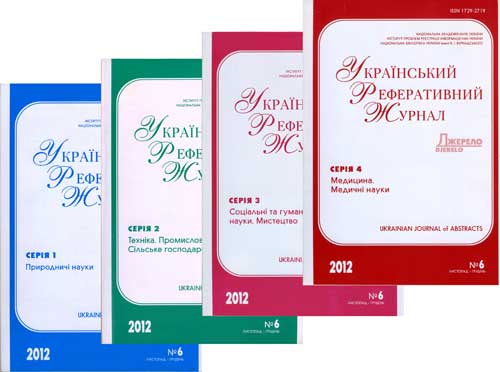РЕФЕРАТИВНА БАЗА ДАНИХ "УКРАЇНІКА НАУКОВА"
Abstract database «Ukrainica Scientific»
Бази даних
Реферативна база даних - результати пошуку
|
|
Пошуковий запит: (<.>ID=REF-0000746277<.>) | |||
|
Загальна кількість знайдених документів : 1 |
|||
Біла Г. І. Високий вміст фруктози в раціоні призводить до утворення нейтрофільних позаклітинних пасток у жовчних шляхах / Г. І. Біла, О. І. Віщур, Р. О. Білий // Експерим. та клініч. фізіологія і біохімія. - 2020. - № 1. - С. 29-35. - Бібліогр.: 16 назв. - укp. Neutrophils safeguard our bloodstreams as well as the surface of ducts, mucosa linings and wounds, intending to protect us from pathogens. Bile ducts connect the bacteria-filled intestine with the liver, the metabolic factory of the body, full of sinusoidal capillaries. Thus, bile ducts become a hot place in the body, requiring constant protection from pathogens. Neutrophils can protect us in three different ways: they can phagocytize pathogens, produce chemicals that can mediate pathogens' death to form neutrophil extracellular traps (NETs). The latter are decondensed DNA fibers, decorated with toxic components of neutrophilic granules and usually associated with abundant ROS production. NETs are considered to be very effective in killing the bacteria, but, due to their nature, they are usually associated with inflammation. The latter can be self-limiting in physiological situations but upon the failure of the phagocytic system of our body or under the constant load of the trigger, it becomes chronic, causing deteriorating changes in the tissues. We demonstrated earlier that hydrophobic nanoparticles cause plasma membrane damage resulting in the NETs formation by neutrophils, it was also demonstrated that cholesterol nanocrystals can do the same. We have demonstrated recently that NETs are those factors initiating gall stone formation. Upon the diet containing high fructose content, there is an increased formation of monosodium urate microcrystals, they are well known for triggers of gout where NETs entrap MSU crystals. This data allowed us to assume the existence of the link between the high fructose content and the formation of NETs in bile ducts. To test our hypothesis we used the developed model of mouse NASH, using young growing mice C57BL6/N kept under normal ration, high fructose diet (HFD) and high lipid high cholesterol diet (HLHCD) as a recently found positive control for NETs formation. The fructose content was 10 % in drinking water, roughly corresponding to the content of fructose in soft drinks consumed by humans. Before the beginning of the experiment and then every 14 days blood samples were collected, animals' weight was monitored. After 6 weeks mice gall bladders were surgically removed and their contents were quantitatively transferred into glass slides and examined for the presence of NETs by visualizing DNA content with PI by means of the fluorescence microscopy. Under both HFD and HLHCD conditions we observed the formation of NETs in the gallbladder. Serum, obtained from blood samples, was analyzed for the activity of neutrophil elastase (an enzyme released from neutrophilic granules upon NETs formation) by using specific fluorogenic substrate. Neutrophil elastase activity was significantly increased after 6 weeks of feeding on the HFD (p = 0,0219) and HLHCD (p = 0,0148, ANOVA). Thus, we can conclude that high dietary fructose content stimulates the formation of neutrophil extracellular traps in bile ducts of experimental animals. These findings are extremely important in understanding the reasons for low-grade inflammation observed under non-alcoholic fatty liver disease (NAFLD) and non-alcoholic steatohepatitis (NASH). Індекс рубрикатора НБУВ: Р413.52 + Р123.814 Рубрики: Шифр НБУВ: Ж16160 Пошук видання у каталогах НБУВ Додаткова інформація про автора(ів) публікації: (cписок формується автоматично, до списку можуть бути включені персоналії з подібними іменами або однофамільці)
| |||
| Національна бібліотека України імені В. І. Вернадського |
 |
| Відділ наукового формування національних реферативних ресурсів |
 |
| Інститут проблем реєстрації інформації НАН України |
Всі права захищені © Національна бібліотека України імені В. І. Вернадського